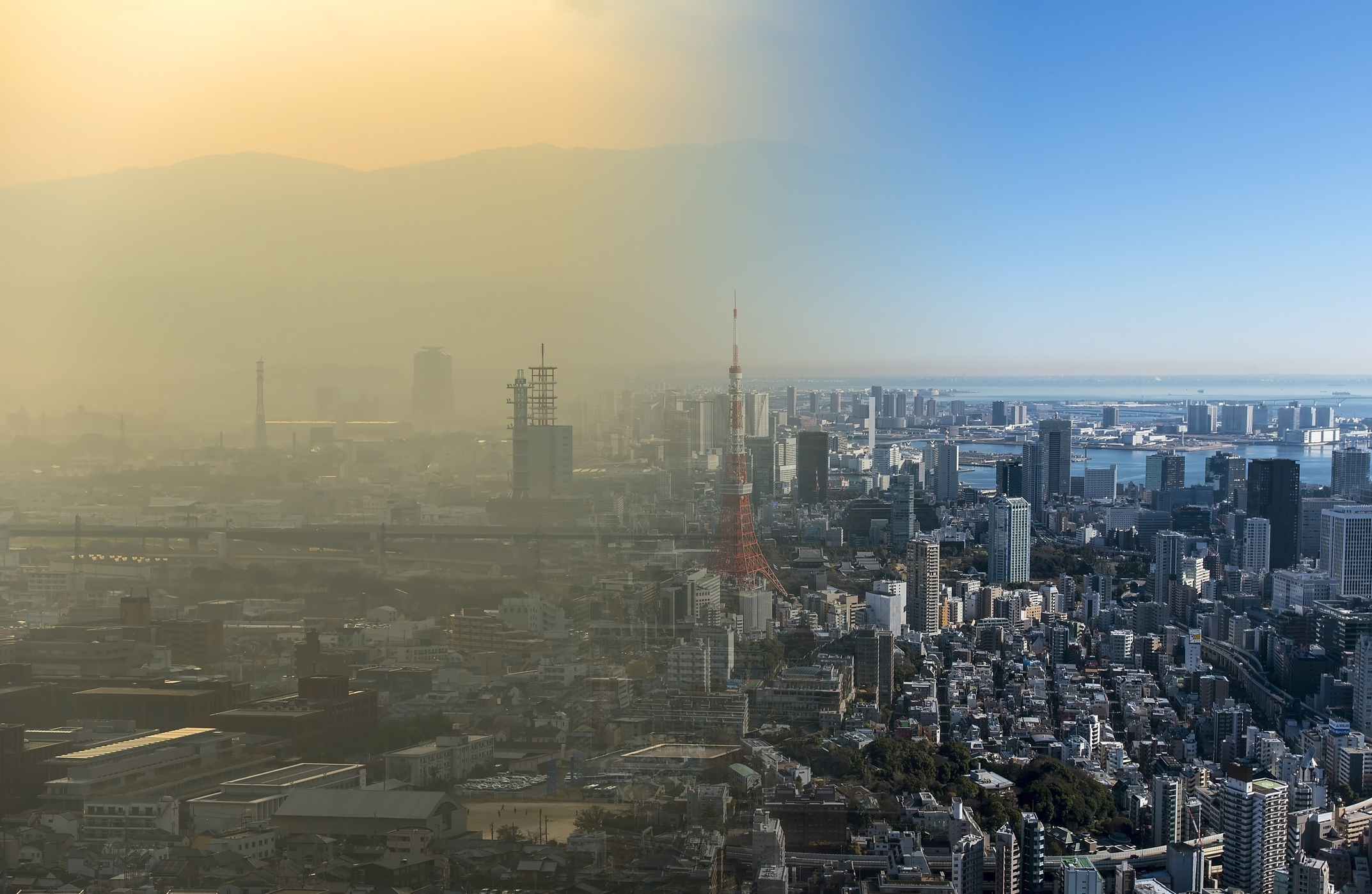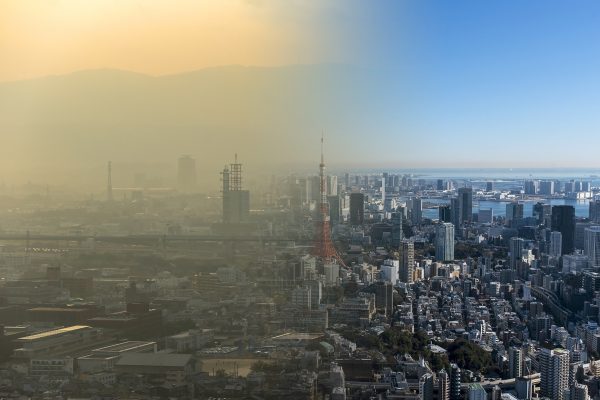
The Economy Behind Clean Air
June 24, 2018 5:08 pmThe Economy Behind Clean Air
What Goes Up Must Come Down
For many years, industries attempted to ignore the impact of air pollution emissions generated from their facilities. Prior to the implementation of the Clean Air Act of 1970 by the U.S. Environmental Protection Agency (EPA), major events occurred that changed the public perception of environmental dangers and placed a spotlight on the need for air pollution regulations. Examples included:
- In 1948, a wall of smog killed 20 people in Donora, Pennsylvania. Their deaths were caused by hydrogen fluoride and sulfur dioxide emissions from U.S. Steel’s facility.
- The 1961 Nuclear Meltdown in Idaho, where three operators were killed when the reactor exploded and sent nuclear emissions into the atmosphere.
- Then in 1962, the publishing of Silent Spring by author Rachel Carson brought light to the massive detrimental effect that pesticide use had on the environment. Further establishing that when noxious pollutants were put into the air, they returned to the ground, leaching into the soil and groundwater.
The intent of the Clean Air Act was to regulate air emissions from a variety of sources while providing progressive regulations and guidelines to abide by.

How Economics Factor in Clean Air Initiatives
The basic economics behind implementing air pollution controls is that these measures save businesses and industries from the enormous cost of other pollution abatement practices such as shoveling industrial waste into landfills.
Since the advent of the 1970 Clean Air Act, chemical and industrial facilities have endeavored to implement EPA regulations regarding containment and removal of contaminants by installing various types of air pollution control equipment. Some of these include:
- Industrial Dust Collectors
- Industrial Scrubbers
- Thermal Oxidizers (Regenerative, Direct-Fired, etc.)
- Flares
- Concentrators
All of these systems are designed to capture emissions before they enter public air streams. Each air pollution control equipment is engineered and designed based on the type of particulate emitted and the particulate release rates. For example, in many food and fragrance manufacturing facilities, a certain amount of particulate is released into the air which is captured by using an industrial scrubber or depending on the nature of the manufacturing process, by a dust collector.

Gaseous Emission Controls
In the case of petrochemicals and gases, emissions are released in air, gas, or liquid streams and are captured by a pollution abatement system that removes particulate before it is released to the atmosphere. Thermal oxidizers are used to capture hazardous gases and volatiles organic compounds (VOCs) in chemical processes for destruction.
In most cases, the use of air pollution control equipment, such as Regenerative Thermal Oxidizers (RTOs), generates economic profitability for plant owners. Depending on the type of process and the technology installed to treat emissions, waste heat and energy can be captured and returned back to the process. This leads to a savings in utility consumption and costs as well as an increase in production efficiency. This type of recapture project works well with facilities where emissions can be re-added back into a process.
The Clean Air Act and Economic Bottom Line
Over the years since the Clean Air Act was passed, business owners of facilities with potential for non-compliance have relied on environmental specialists like Ship & Shore Environmental Inc. to assist with filing EPA and state agency compliance reports such as air permits for each source of emission release at their facilities.
In addition, these environmental experts help industrial facilities maintain EPA standards for air pollution control, such as National Ambient Air Quality Standards (NAAQS). They help clients determine whether these sources are stationary or mobile and what the volume of emissions is in parts per million (ppm) or parts per billion (ppb.)
Facilities are required to provide their state regulatory agency and EPA with several compliance reports, such as a Toxic Release Inventory (TRI) and Emergency Planning and Community Right to Know (EPCRA).
From an economic standpoint, companies who violate the Clean Air act can be fined depending on the cost of remediation and impact on public health and safety. For example, a large U.S. auto maker was fined, “$2.8 billion, considered a criminal fine, to settle allegations it used illegal software to cheat emissions tests to sell approximately 590,000 diesel vehicles and avoid Clean Air Act compliance.” Other industries economically affected by environmental regulations include cement and glass manufacturing, petrochemical refineries, fertilizer manufacturers, coal fired power plants, and others. Consequences for non-compliance with air regulations typically include large fines.
Ref: https://www.epa.gov/newsreleases/epa-announces-2017-annual-environmental-enforcement-results
Cost vs. Benefits
The U.S. EPA report on cost versus benefits of the Clean Air Act show benefits exceed costs by a ratio of 30 to one. In dollar values, this equates to $2 trillion in benefits vs. $85 billion in costs.
Continued burning of fossil fuels has cost the U.S. $240 billion a year in the past decade. The argument for expanding the use of fossil fuels indicates a clear picture of the impact of cost on the U.S. economy.
“1100 U.S. coal fired power plants emit approximately two-thirds of the nation’s emissions inventory of sulfur dioxide (SO2) and approximately one-third of the nitrogen oxides (NOx).”
Ref: https://www.epa.gov/enforcement/air-enforcement
The Future of the Clean Air Act
Since the Clean Air Act’s sole purpose is to maintain public health and safety, the economic benefits of this legislation far outweigh alternatives. There is an interesting scientific rule of thumb regarding humans and their need for oxygen. It’s known as the “rule of threes:” Three minutes without oxygen, three days without water, three weeks without food.
Ref: http://www.businessinsider.com/longest-survival-records-water-food-sleep-breathing-2016-5
With the rule of threes in mind, it is easy to see why clean air is a human necessity. Another example of how serious air pollution can be seen in the dangerous air pollution levels of smog in Hong Kong, China. Citizens, even those with no underlying health conditions, are told by government officials to stay inside.
Ref: http://www.newsweek.com/hong-kong-smog-has-become-serious-health-risk-786703
In the U.S., California has enforced laws that require all vehicles older than six years to be “smog inspected,” because of the increase in poor air quality. The LA Times reported that the “apparent disconnect is forcing regulators to explain why air quality in the nation’s worst-polluted region is dipping.”
Ref: http://www.latimes.com/local/lanow/la-me-ln-bad-air-days-20171115-story.html
Ozone is a noxious gas found in smog. It enflames lung tissue and causes asthma attacks, as well as other health problems. The EPA has cited several California cities for air quality violations.
Impact of the Clean Air Act
Good health, clean air, and healthy productive workers are vital elements for the success of business owners. The benefits of the Clean Air Act heavily outweigh the costs as it applies to industrial operations and employees. Implementing solutions towards a cleaner environment is a serious commitment and a necessary investment. Ship & Shore Environmental can provide a full range of environmental services based on clean air solutions such as air pollution control fabrication, heat recovery/heat exchangers, catalytic oxidizers, remediation solutions and collection system design and fabrication, for a variety of industry needs.
For more details on these services, visit www.shipandshore.com to find air pollution equipment and other plant optimization services that help towards production efficiency and cost-effectiveness for energy and compliance and clean air solutions.
Categorised in: Air pollution, Climate Change, EPA, Industry news, News, News, RTO

